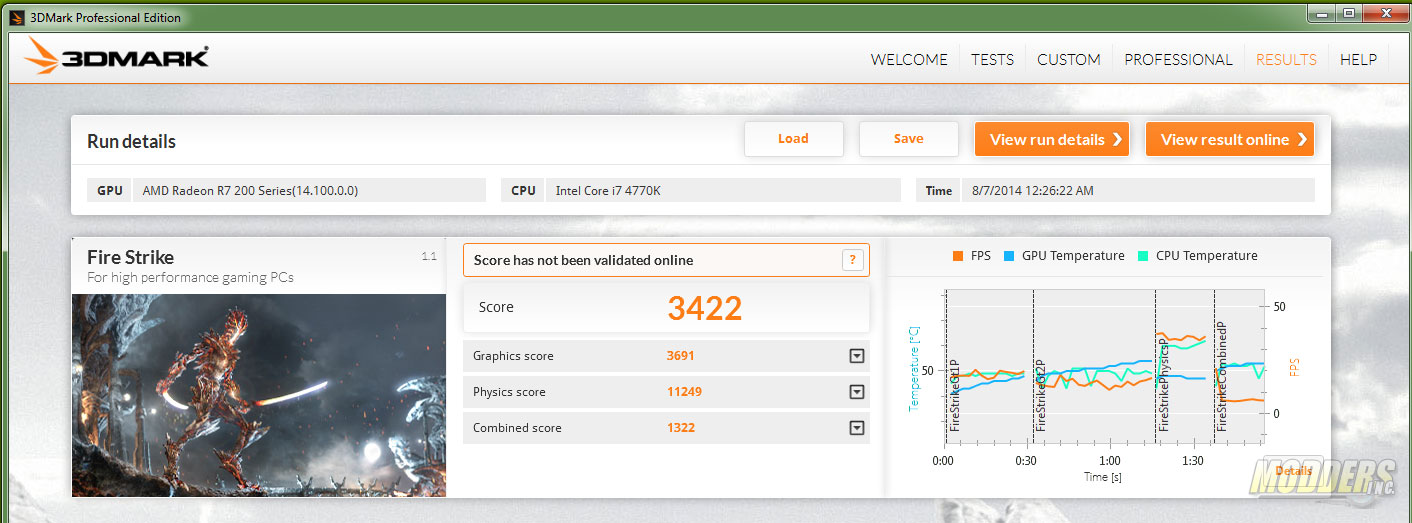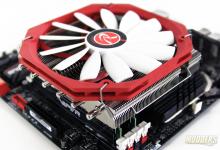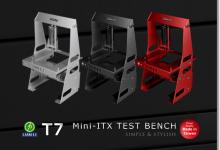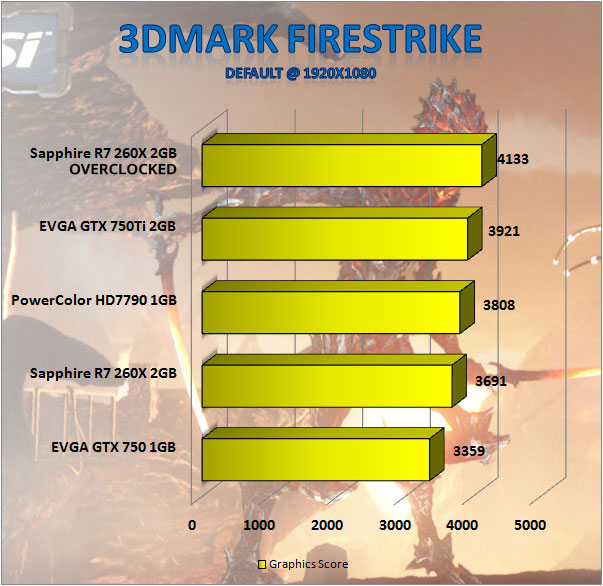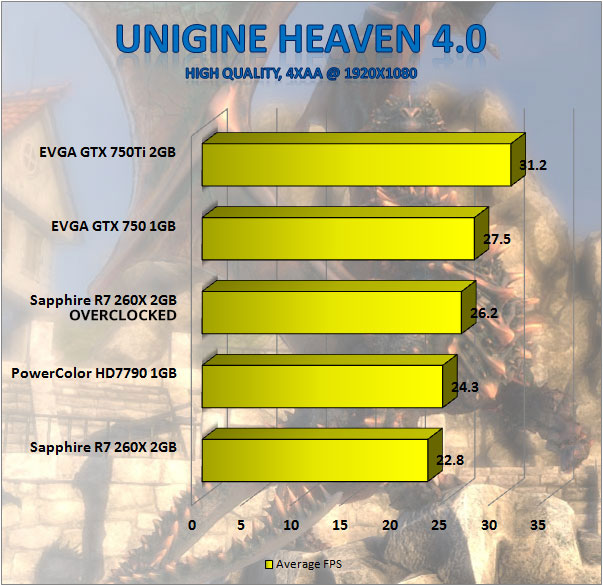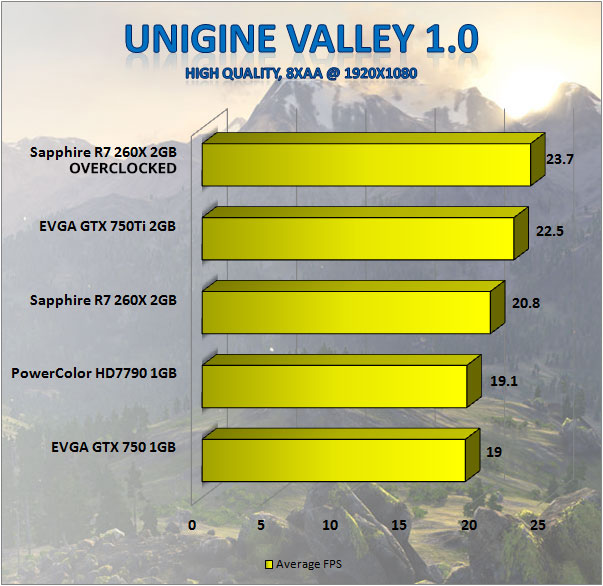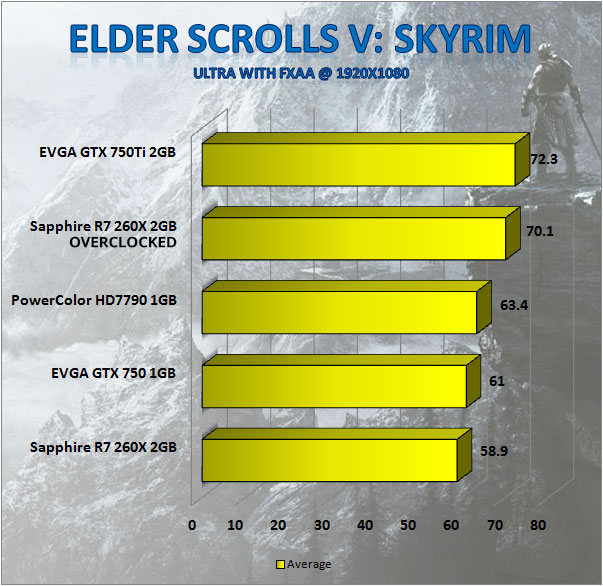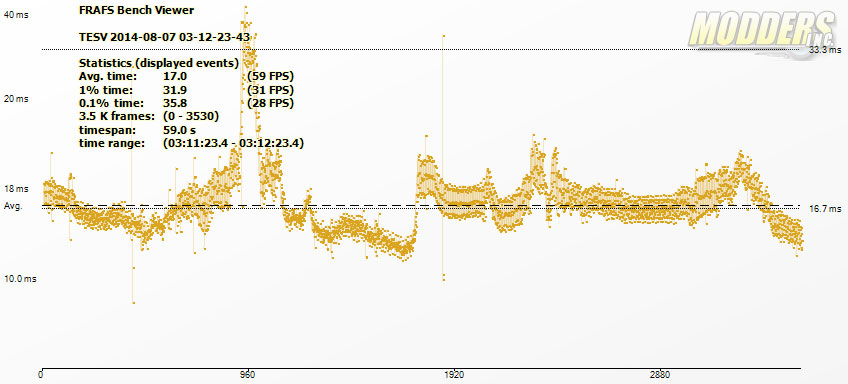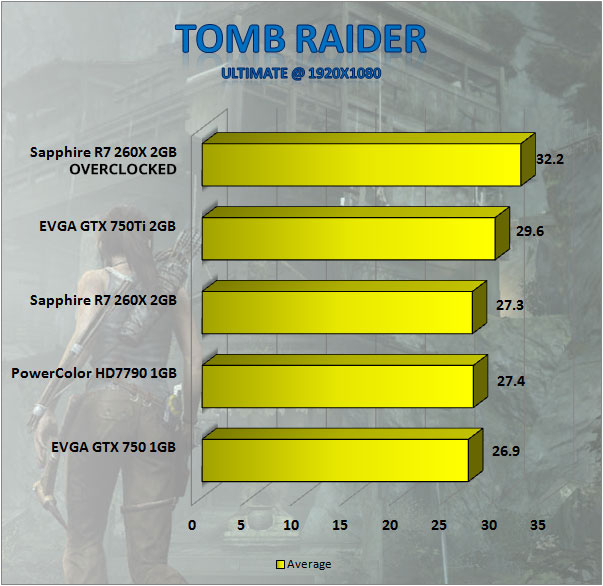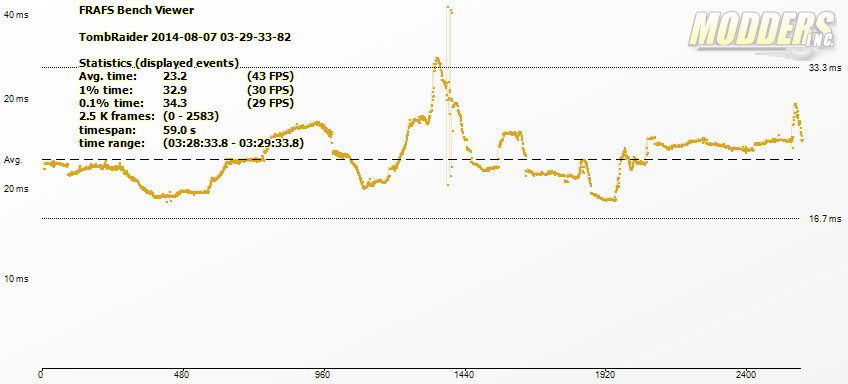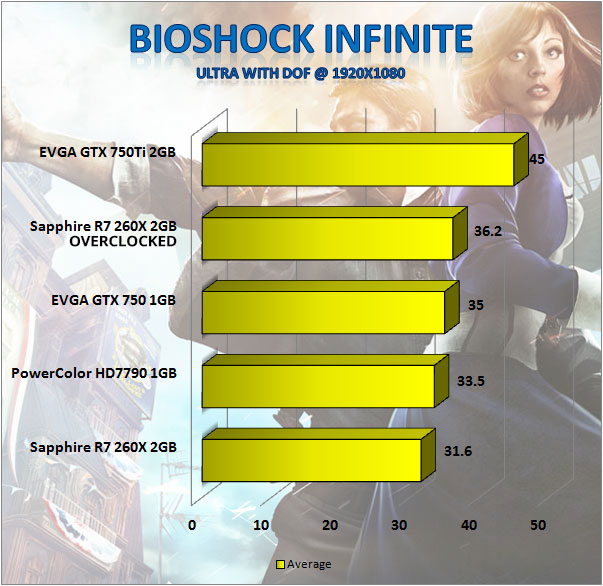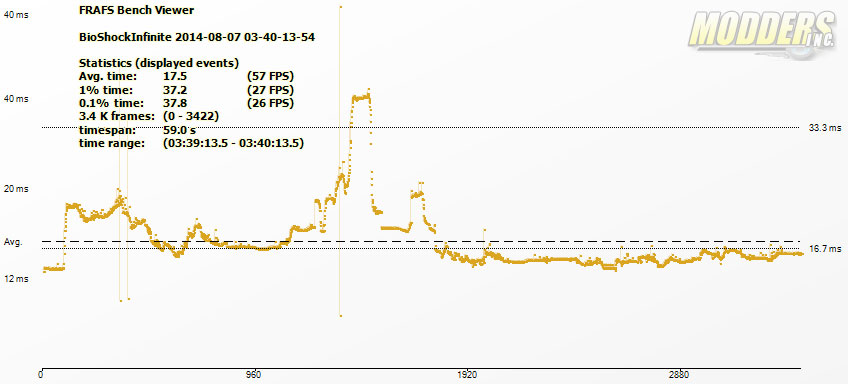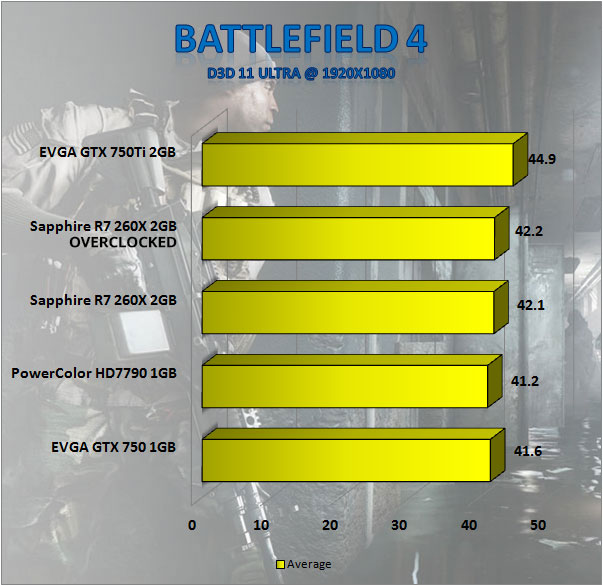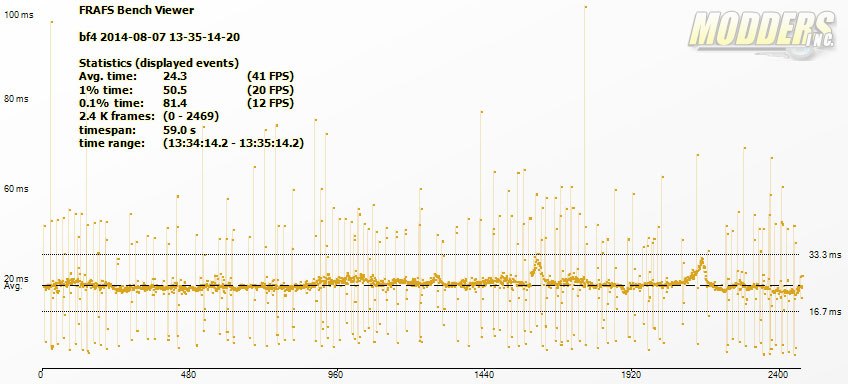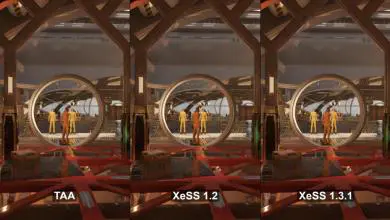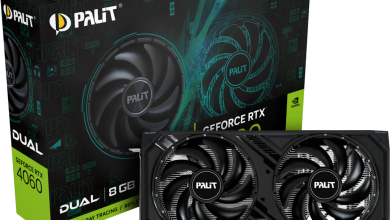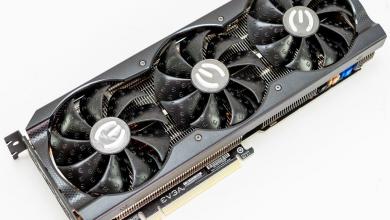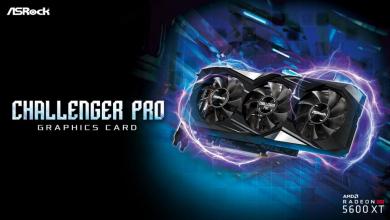Sapphire R7 260X (100366-3L) Video Card Review
Test System and Testing Procedures
| Processor | Intel Core i7-4770K (Retail) |
| CPU Cooler | Noctua NH-U14S with Noctua NT-H1 thermal compound |
| Motherboard | ASUS Z87 Maximus VI Gene |
| Memory | Patriot Viper 3 “Black Mamba” 2x8GB DDR3 2100 MHz CL11 |
| Storage | OCZ Agility 4 256GB SSD |
| Case | Cooler Master HAF XB (Open air testbench mode–all fans removed) |
| Drivers | 1402 BIOS, AMD Catalyst 14.4, NVIDIA 340.52 WHQL |
| Video Card(s) | Sapphire R7 260X (100366-3L), PowerColor HD7790 1GB, EVGA GTX 750 1GB, EVGA GTX 750Ti 2GB |
| Monitor | BenQ XL240T 120Hz |
| Operating System | Windows 7 x64 Ultimate SP-1 with latest patches and updates |
Latest working BIOS, updates and drivers were used at the time of the review. Each test was conducted at least three times for accuracy. All benchmarks were performed at a resolution of 1920 x 1080 unless otherwise specified.
Benchmark Settings
Synthetic Benchmarks
- 3DMark (Firestrike) – Default Preset
- Unigine Valley 1.0 – High Quality, 8xAA
- Unigine Heaven 4.0 – High Quality, 4xAA, Normal Tessellation
Gaming Benchmarks
- The Elder Scrolls V: Skyrim – Ultra Preset with FXAA enabled. 60 second playthrough with Fraps frametimes
- Tomb Raider – Ultimate Preset. Built-in benchmark and 60 second playthrough with Fraps frametimes
- Bioshock Infinite – Ultra Preset with DoF ON. Built-in benchmark and 60 second playthrough with Fraps frametimes
- Battlefield 4 – Ultra Preset D3D 11 renderer. 64-player Golmud Railway multiplayer playthrough with Fraps frametimes
| Video Card(s) | Core Clock (MHz) | Memory Clock (MHz) | Current Price ($ USD) |
| Sapphire R7 260X 2GB | 1000 | 1250 | 119.99 |
| PowerColor HD7790 1GB | 1030 | 1500 | 119.99 |
| EVGA GTX 750 1GB | 1020 (1085) | 1253 | 119.99 |
| EVGA GTX 750Ti 2GB | 1020 (1085) | 1350 | 149.99 |
3DMark Firestrike from Futuremark is a Semi-synthetic DirectX11 benchmark designed for high-performance gaming PCs. Firestrike performs advanced geometry, illumination and particle tests with its Graphics benchmark and performs physics simulations using the CPU. For our video card test, only the graphical score is taken.
Unigine Valley 1.0 and Heaven 4.0 are GPU intensive synthetic benchmarks that utilize tessellation, advanced lighting, dynamic environments and other DirectX11 graphical features. Both of these are excellent for video card stability and temperature testing and even supports Stereo3D and multi-monitor benchmarking.
Gaming Benchmarks
The first in our real-world gaming benchmarks involves the ultra-popular The Elder Scrolls V: Skyrim which runs on Bethesda’s Creation Engine and utilizes a DirectX 9 API. Benchmarks were performed during the initial escape scene in the beginning at Helgen while Alduin the ancient dragon razes the hold to the ground.
A small segment there breaking above the 33.3ms line, specifically in the scene where Alduin breathes fire through the wall, also a minor spike in the half-way mark but for the most part everything stayed relatively close to the average.
Tomb Raider is a re-launch title of the decades old video game series utilizing a DirectX 11 Crystal Engine to render a 3rd-person action adventure game. It has a built-in benchmark used for cross-video card comparison but the frametimes performance are from a 60 second playthrough inside the caves of the Coastal Forrest.
Since the Ultimate preset is categorically unplayable for the set, Ultra preset (without TressFX hair enhancement) was used for frametimes. The part where the spike in the graph is that part in the game where Lara has to walk through under a waterfall while holding a torch which significantly slowed down framerate.
Bioshock Infinite is the third title in the alternate-universe first-person shooter franchise utilizing Unreal Engine 3. The built-in benchmark was used for video card comparison but the frametimes performance is from a 60 second playthrough with the main protagonist Booker DeWitt exploring the lighthouse in the initial level.
The two quick spikes in the graph are from object interaction and is caused by the game engine rather than GPU/driver. Relatively smooth performance here with little time spent above 33.3ms.
Unlike all the other games tested, the Battlefield 4 benchmark was conducted using multiplayer gameplay. How can a repeatable test be done on a 64-multiplayer first-person shooter game? Join a 64-player Conquest Mode server playing on a Golmud railway map. Spawn on the US side and take a jeep while stopping to shoot at specific points in the map. If the player dies before the 60 second is completed, then the test is re-done. The hardest part of doing this test is actually getting in the server as it is almost always full.
Not surprisingly, the frametimes look a lot weirder compared to previous tests. While for the most part, the bulk of the frames are within stones throw of the average, many spikes are present.
